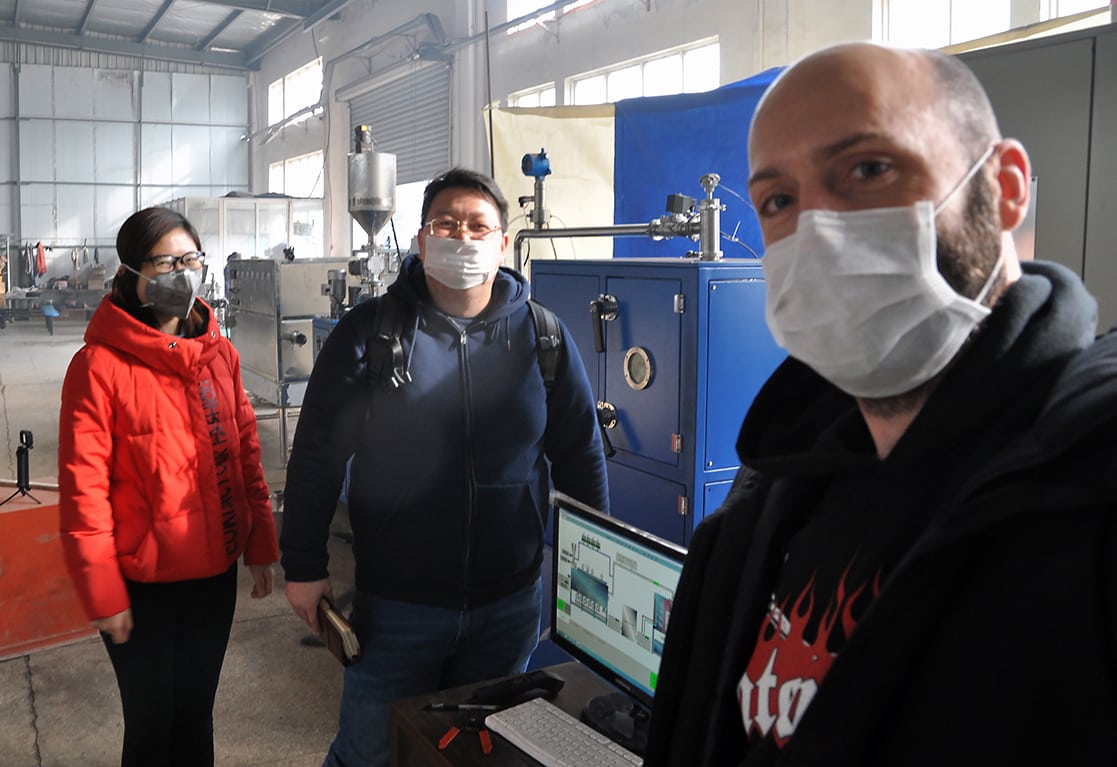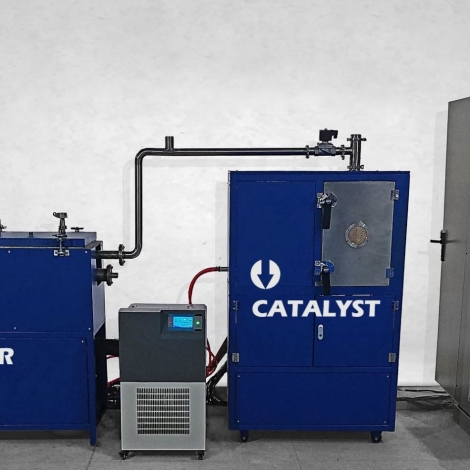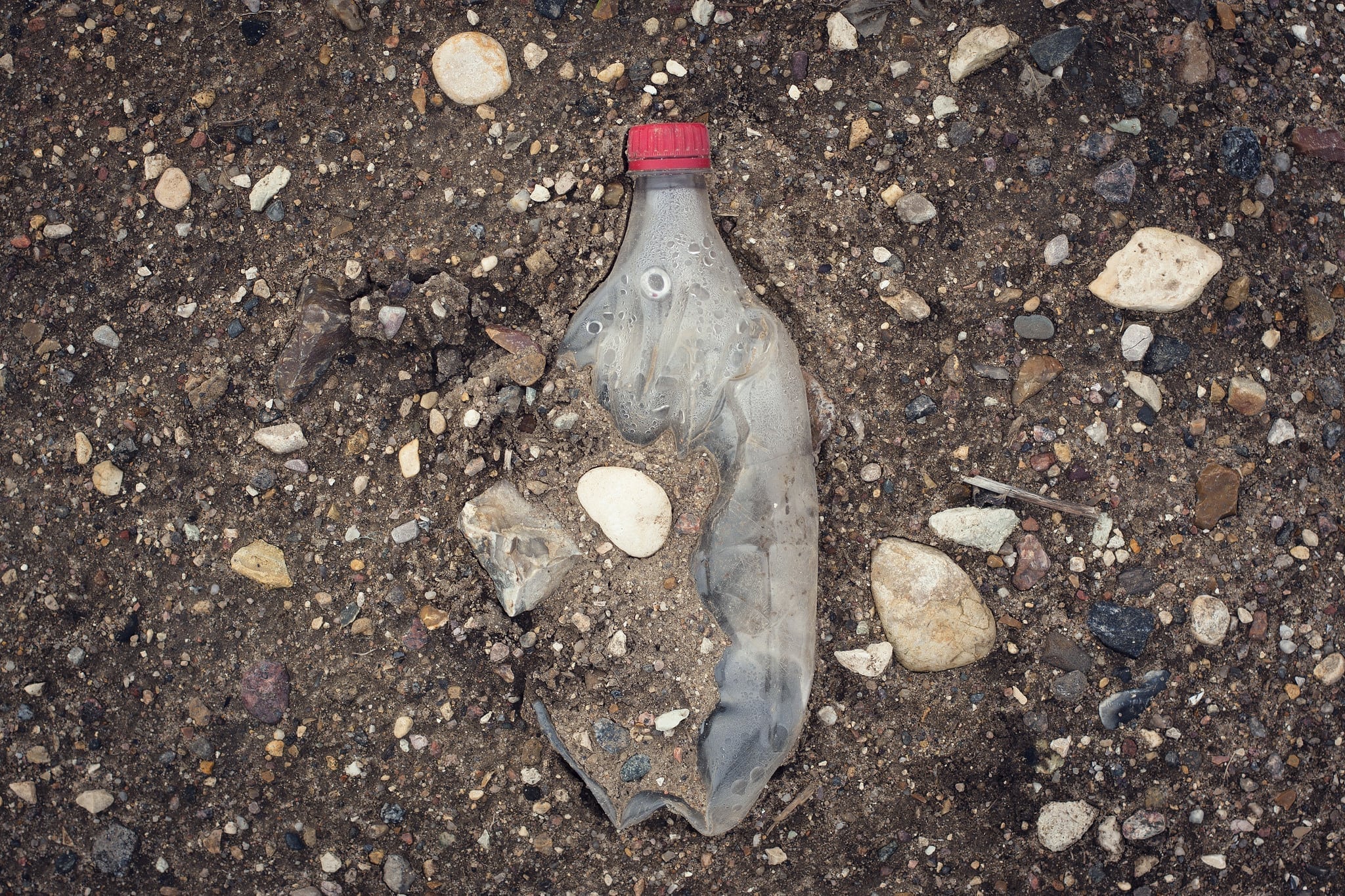China has been burying itself under a mountain of toxic sludge, but one startup may have a technological solution. Innov8tia has developed a microwave pyrolysis reactor that decontaminates industrial sludge, converting it into valuable gases and chemicals.
China’s sewage and industrial sludge has contaminated water and soil with heavy metals, pesticides and pathogens. Some of the waste goes to landfills that will accept it, but illegal dumping has been easy and cheap. “To dispose of 500 tons of toxic sludge in the south China city of Guangzhou, all you need is a hired boat and a little money for petrol,” Yang Dazheng and colleagues write in Chinadialogue. There may be change on the horizon after a nationwide government crackdown on polluters in late 2017 that swept up 12,000 officials and fined 18,000 companies. The Dafeng Pesticide Factory in Yancheng City, 250km north of Shanghai, closed during a surprise inspection, then turned to Innov8tia for help processing its sludge.
The process converts sludge into hydrogen and syngas and more than 70 valuable chemicals, carbon nanotubes and water.
Test runs of two scaled down versions of Innov8tia’s reactors found that they could convert 30—35 percent of a Dafeng sludge sample to char, and 65—70 percent into gas, most of which was hydrogen and carbon monoxide. Both gases are valuable. Hydrogen is used in the petroleum and chemical industries and as a coolant, and carbon monoxide, also called syngas, is used in chemical manufacture, meat packing, medicine and even lasers.
The process also yields other useful materials including carbon nanotubes and more than 70 chemicals (levoglucosenone, furfural, phenolic compounds, 3-aminopiperidin-2-one, D-allose, cresols, vanillin and others) that value (USD) $1200—$250,000 per ton.
The process is more efficient than traditional pyrolysis at harvesting materials from sludge, and it generates more energy than it requires.
The three-person Innov8tia team graduated from the Vatican’s Laudato Si Accelerator in December 2017 and returned home with seed funding of $100,000 convertible note (an investment). Now the team has moved into a 530m2 warehouse in the Ningbo National Hi-Tech Zone, a government-operated technology park. Their neighbors are 30 other startups, all better funded than they are, says Seth Knutson, one of the co-founders.

Innov8tia’s team (left to right): Jessica He, Kaiqi Shi and Seth Knutson. Photo courtesy of Seth Knutson
“Our current reactor system, capable of treating 20-40 kg of sludge per hour, is up and running in this facility, although it’s essentially an empty warehouse right now,” Mr. Knutson says. “This is the largest, and we think only, microwave pyrolysis industrial sludge treatment system currently in operation in the world. Innov8tia should be the first company in the world to offer microwave pyrolysis systems for industrial sludge treatment.”
The other co-founder is Dr. Kaiqi Shi, a chemical engineer who developed the microwave pyrolysis technology while studying at the University of Nottingham’s China campus. Dr. Shi developed a self-cleaning nickel catalyst that converts more of the sludge into gases and less into char. Thus, the microwave process harvests more materials from sludge and requires less energy than traditional pyrolysis.
The machine pictured above is Innov8tia’s first commercial system and can treat 500kg of sludge per day. The technology has been independently certified by a group at the Chinese Academy of Science, the team’s patent won an Innovation Award from the China government, and the prototype was independently verified by a group of industry experts.
One of Innov8tia’s first jobs in its new headquarters is to test sludge samples sent from a leading international environmental services provider, a relationship forged in Rome during the accelerator. No agreements have been signed, yet, and the company will remain anonymous until a possible future public announcement.
In the meantime, a technology like Innov8tia’s has a vast market in China. The Chinese government has pledged to clean up the country’s polluting industries, and companies may be seeking legal means of treating their waste.


Can this sludge be treated by an anaerobic digester, such as the one used on yard waste at CC&R at Perris, California? Here, the principal output gas is methane, and the remainder is fertilizer. The digester, said to be the largest in the world, has a much higher throughput than any pyrolysis is system to date.
How are toxins removed in this system? What temperature is required? How is the energy, to run the microwave, recovered?
Hello, I’m Seth from Innov8tia. Thanks for reading the article and asking about our system. There are several ways our R2S compliments AD and differentiates itself:
1. We focus on treating industrial sludge and mixed partially corroded plastics, waste streams which are not recyclable, are often hazardous, and for which no other treatment exists. Anaerobic digestion is best suited for applications such as food waste, yard waste, municipal sludge, farm animal manure, waste we’d generally consider to be “safe and compostable”. Innov8tia’s R2S treats waste which contains heavy metals, persistent organic compounds & other industrial organic chemicals, and non-biodegradable compounds (plastics) which AD cannot treat due to potential poisoning and collapse or reduced efficiencies.
Most AD reduces mass by around 50%, in cases where this sludge has no commercial application or remains hazardous, we can treat it. We also treat waste which either cannot be incinerated, is too expensive to be incinerated (high moisture content, transportation), the environmental/social consequences of incineration are not acceptable, or local governments do not want to give up the land space to build large incinerators or AD facilities.
We’re working with a food waste AD facility here in China to treat the sludge they produce, which contains maybe 15-20% plastics. There is an interesting paper which looks at combining AD and pyrolysis, with positive results: Environmental & Economic Life Cycle Assessment of Current & Future Sewage Sludge to Energy Technologies (Mills, 2013).
2. We view large, high throughput facilities as a less efficient state in many cases. We’ve designed the R2S to be small but equally efficient, allowing the system to be installed at the source, where waste is generated – achieving the process results we want without the expense and carbon footprint of transportation. The R2S is sized to treat the amount of sludge generated by a single manufacturer (around 3 to 6 metric tons per day) up to a pipe fed centralized treatment facility in an industrial park (maybe 150 to 250 tpd). Similar tech from our same university’s lab is being used to build what will be the largest single gasifier in the world, but in Innov8tia’s case smaller = better.
https://www.nottingham.ac.uk/news/pressreleases/2018/april/powering-china's-future-with-clean-coal-technology.aspx
3. Toxins, temp, and energy. We do not produce many toxins in the first place, trivalent Cr isn’t converted to hexavalent Cr, we don’t produce H2S, NOx/SOx, and if we do we can simultaneously remove it along with any Hg. We reform 100% of organic compounds into useful products, if there are biologically available toxins (most probably heavy metals) we can crank the temp up to produce a non leaching slag instead of char. Because of our microwave enhanced nickle based heterogeneous catalysts we can operate at lower temperatures, generally between 500 to 850 C, up to 1200 if we need to. From most sludge we produce around 70% (% mass) syngas (H2+CO, some CH4 and other hydrocarbons C2-C4, H2 content is up to 40% by volume) and 30% char, little to no oil. The gas has an energy content of around 13-19 MJ/kg depending on the sludge feedstock, we use this gas to run a CHP which provides the energy we need to run the system, overall parasitic loss is around 50%, which isn’t bad. A microturbine or SOFC could also be used – in fact we’re working with a SOFC startup here in Ningbo and would prefer fuel cells, once they are acceptable to both accountants and system operators.
From experience in Malaysia I can confirm these processes work well. About seven years ago I met and worked with a Malaysian engineer in Kuala Lumpur who had developed a design using redundant magnetrons to process food market waste into fertiliser and methane as its power source (after being started up with a separate generator at the time). He found start-up funding from a municipality innovation fund to cut waste disposal costs and in exchange provided modular and scalable to hospitals, prisons and schools that had organic waste to process and nurseries requiring fertiliser – It certainly worked well for several years and was set for expansion with local bank financing before the Founder’s son tragically died in a road accident. Main teething troubles were around keeping metal and plastic out of the organic waste stream (paper and wood being ok). The fertiliser pellets produced could be pushed into the ground to a depth of about 30cm to ensure optimal usage by food crops and not weeds. The pellets “leached” fertiliser over time and were not washed out by heavy rain. We would be very pleased to explore this new version further – or even resurrect the original for the benefit of waste disposal and food production in ITC’s beneficiary countries. Ian Sayers, Head – Access to finance and enterprise sustainability, International Trade Centre, Geneva. T:+41791359562 , E: sayers@intracen.org